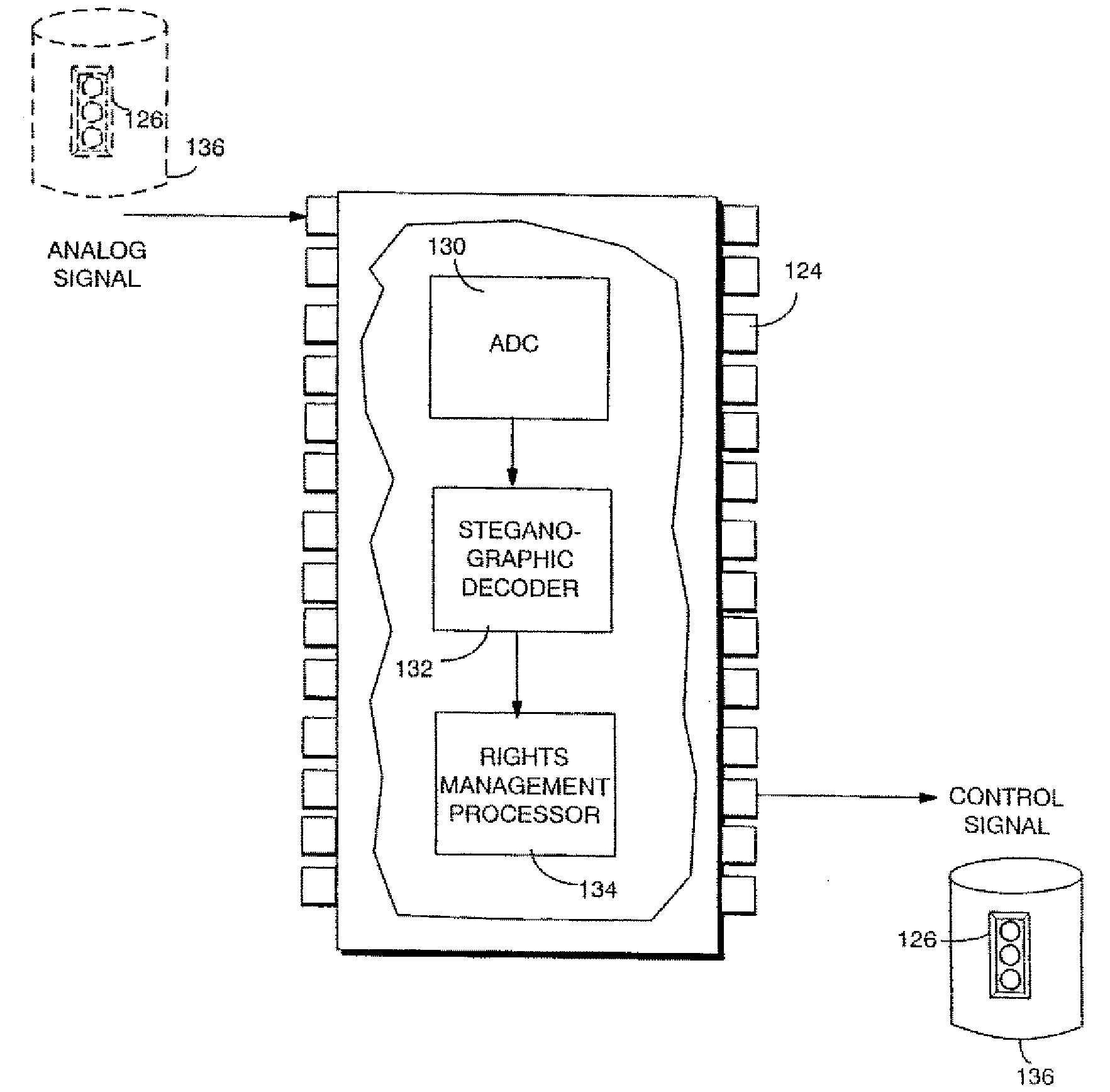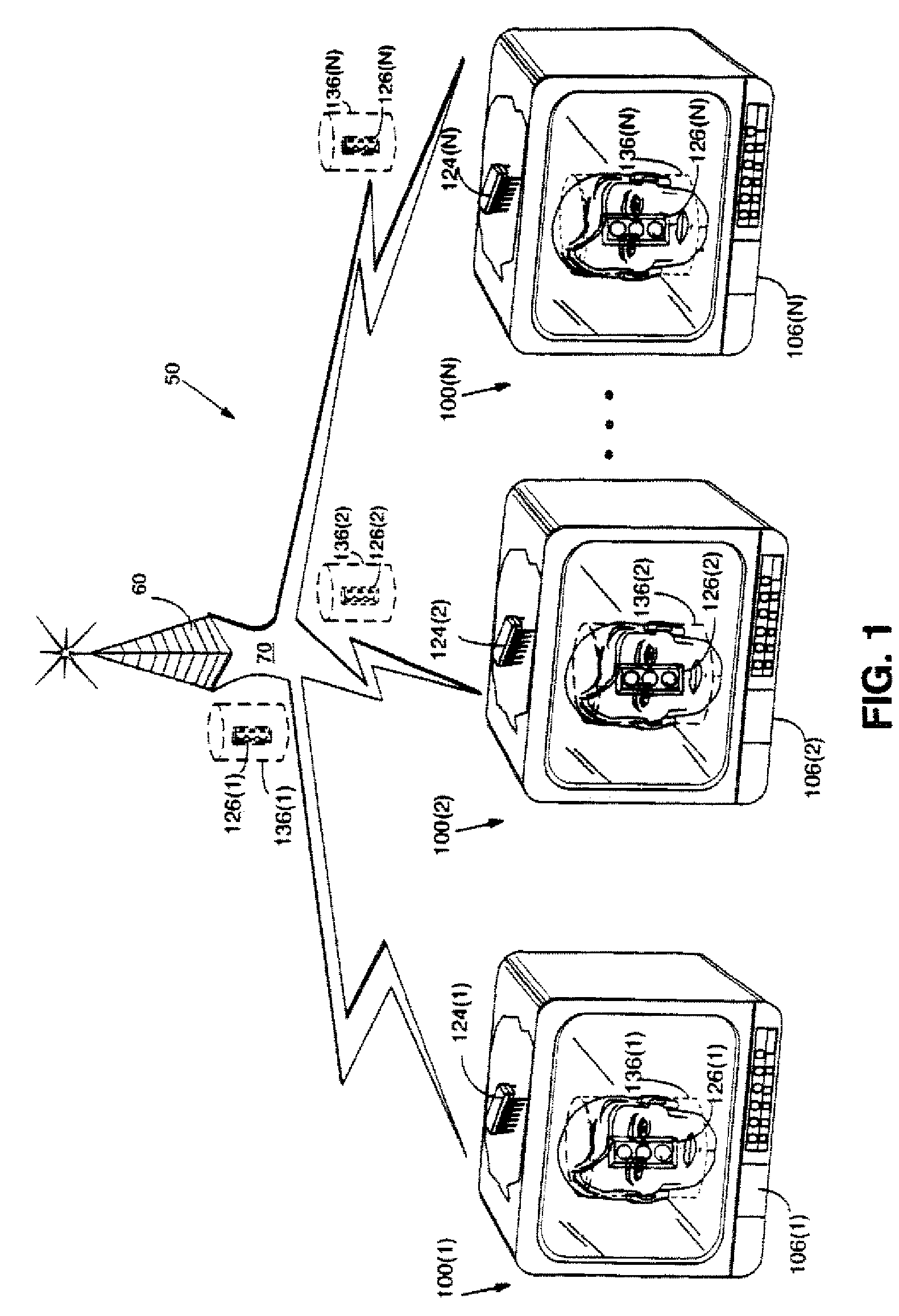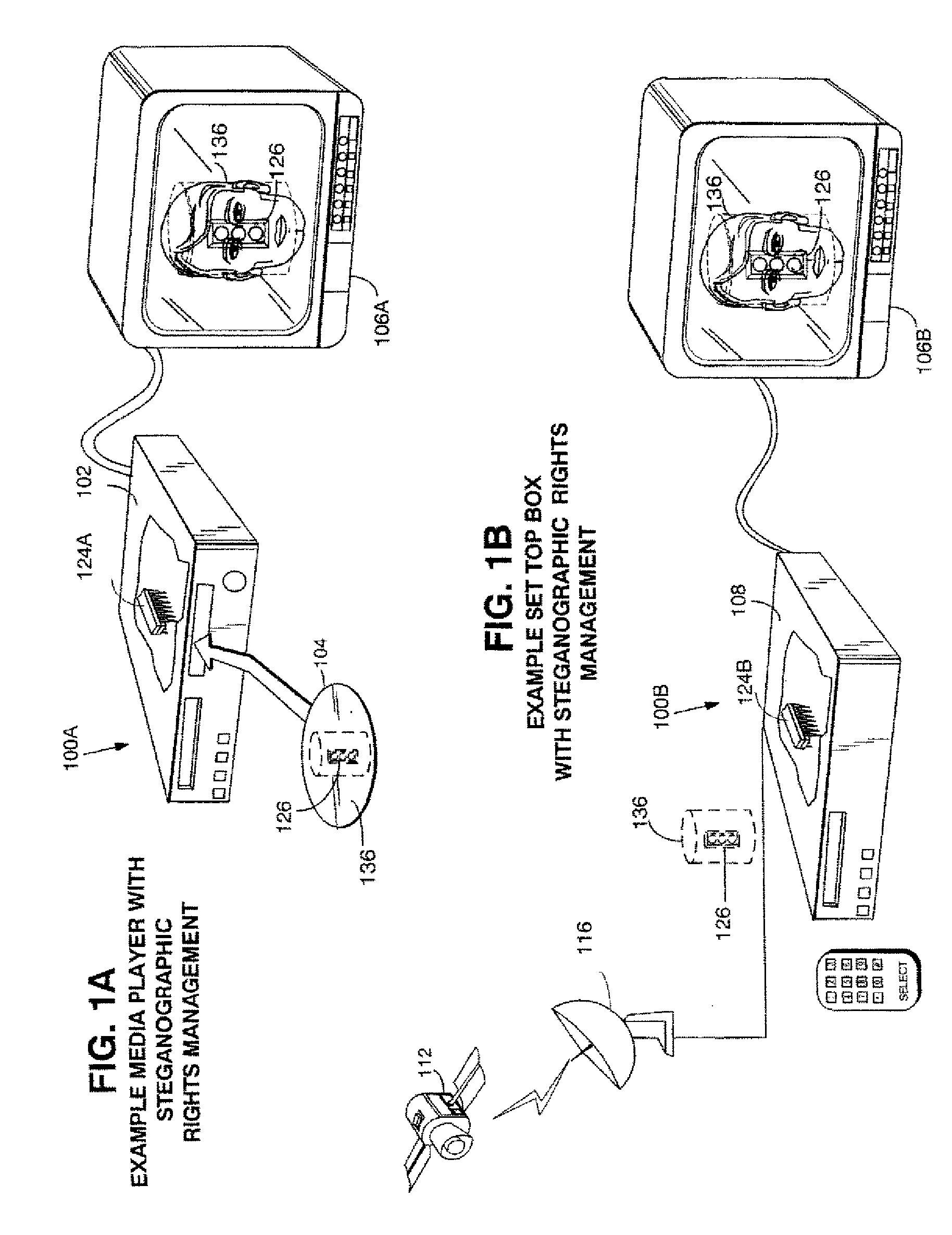Steganographic techniques for securely delivering electronic digital rights management control information over insecure communication channels
a technology of electronic control information and communication channels, applied in computer security arrangements, record information storage, two-way working systems, etc., can solve the problems of inability to easily circumvent methods, inability to manage rights and copyright in analog realms, and high cost of conversion from analog to digital. achieve the effect of preserving noise and ensuring accuracy
- Summary
- Abstract
- Description
- Claims
- Application Information
AI Technical Summary
Benefits of technology
Problems solved by technology
Method used
Image
Examples
example electronic appliances
[0091]The present inventions may be used with all sorts of different kinds of electronic appliances 100 each of which may include a rights management component 124. FIGS. 1A-1E show various example electronic appliances 100 embodying aspects of the present invention. For example:[0092]FIG. 1A shows an example media player 102 capable of playing Digital Versatile Disks (DVDs) 104 on a home color television set 106. For example, media player 102 may provide analog output signals to television set 106, and may also process digitized video and / or audio analog signals stored on optical disk 104. Rights management component 124A provides digital rights protection based on steganographically encoded controls 126.[0093]FIG. 1B shows an example set top box 108 that can receive cable television signals (for example, via a satellite dish antenna 110 from a satellite 112) for performance on home television set 106. Set top box 108 shown in FIG. 1B may receive television signals from antenna 110...
example control
Steps
[0162]FIG. 13 shows example control steps that may be performed by protected processing environment 138 (e.g., security microprocessor 200) to provide electronic digital rights protection. The FIG. 13 read / play routine 300 begins with protected processing environment 138 applying rules 126—in effect, setting the initial state in which rights management can occur (FIG. 13, block 302). Protected processing environment 138 then reads the output of CD-ROM decoder 310 (FIG. 13, block 304) and obtains steganographically encoded data from the output stream (FIG. 13, block 306). If protected processing environment 138 encounters the beginning of the control information organizational structure (“yes” exit to decision block 308), the protected processing environment performs an initialization step (FIG. 13, block 310) to begin receiving new control information 126 and then returns to block 302 to again apply current control information (FIG. 13, block 302). If, on the other hand, protec...
examples
[0173]FIG. 15A shows an example analog signal distribution arrangement 500 provided in accordance with this invention. Within arrangement 500, a steganographic encode block 400 encodes an analog information signal A with rights management control information 126 and associated organizational structure(s) 136. The steganographically encoded information signal A′ is distributed by various mechanisms to user electronic appliances 100. For example, the encoded signal A′ may be broadcast wirelessly over the air by a broadcaster 60A, distributed over a cable television network by a cable television head end 502, and / or distributed via a satellite communications network 504. Encoded signal A′ may, during the process of being distributed, be converted from analog to digital form and back again. For example, the satellite uplink 504A may digitize signal A′ before transmitting it to the satellite 504b, and the satellite downlink 504c may convert the signal back to analog before providing it t...
PUM
| Property | Measurement | Unit |
|---|---|---|
| time interval | aaaaa | aaaaa |
| flexible | aaaaa | aaaaa |
| degree of flexibility | aaaaa | aaaaa |
Abstract
Description
Claims
Application Information
 Login to View More
Login to View More - R&D
- Intellectual Property
- Life Sciences
- Materials
- Tech Scout
- Unparalleled Data Quality
- Higher Quality Content
- 60% Fewer Hallucinations
Browse by: Latest US Patents, China's latest patents, Technical Efficacy Thesaurus, Application Domain, Technology Topic, Popular Technical Reports.
© 2025 PatSnap. All rights reserved.Legal|Privacy policy|Modern Slavery Act Transparency Statement|Sitemap|About US| Contact US: help@patsnap.com



